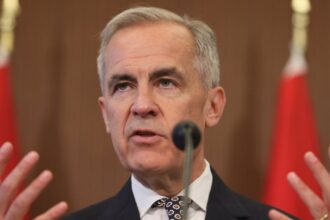Under a bright autumn sky, hundreds of early childhood educators converged on the steps of provincial legislatures across Canada yesterday, their voices unified in a growing call for fundamental change in how the nation values childcare work. Colorful signs bearing messages like “Value Our Work” and “Quality Care Requires Quality Wages” punctuated the crowds as workers, parents, and advocates demanded government action on what many describe as a childcare crisis.
“We’re educating the next generation of Canadians, yet many of us can barely afford rent,” said Martina Chen, an early childhood educator with 15 years of experience who currently earns $22 per hour. “This isn’t just about our wages—it’s about recognizing that childcare is essential infrastructure for a functioning economy.”
The nationwide demonstrations come at a critical juncture for Canada’s childcare system, which has been plagued by chronic staff shortages, waiting lists stretching into the thousands in major cities, and what advocates describe as a unsustainable business model. The federal government’s ambitious $30 billion childcare program, aimed at creating $10-a-day childcare spaces nationwide by 2026, has increased pressure on provinces to address workforce conditions.
Research from the Childcare Resource and Research Unit indicates that nearly 30% of qualified early childhood educators leave the profession within five years, citing low wages as the primary factor. This turnover creates instability for children and undermines quality of care, according to Dr. Alison Fraser, a developmental psychologist at the University of Toronto.
“Children thrive with consistent caregivers,” Fraser explained. “The revolving door of educators we’re seeing is harmful to child development, particularly for infants and toddlers who need stable attachment relationships.”
Provincial responses to the demonstrations have varied widely. In British Columbia, where the government recently implemented a wage enhancement program, officials announced an additional $4 per hour increase for qualified educators by next year. Meanwhile, Ontario’s government has yet to commit to specific wage targets, despite having the country’s highest childcare costs and most severe staffing shortages.
Parents joined the rallies in significant numbers, many bringing their children and sharing personal stories of childcare struggles. Sarah Nowak, a Toronto software developer and mother of two, described paying $2,800 monthly for her children’s care—more than her mortgage payment.
“I returned to work after maternity leave only to discover that nearly half my salary goes to childcare,” Nowak said. “The system isn’t working for families or for educators.”
Economic analysts point to multiple studies showing that investment in childcare yields substantial economic returns. A recent report from the Conference Board of Canada estimates that every dollar invested in childcare returns approximately $2.50 to the economy through increased workforce participation, particularly among women.
“Childcare is not a social service—it’s economic infrastructure,” explained economist Raymond Chow. “Countries that have invested in comprehensive childcare systems see higher GDP growth, reduced gender wage gaps, and improved social outcomes.”
As the demonstrations concluded, organizers presented a unified set of demands to provincial and federal leaders: a national wage grid starting at $30 per hour for qualified educators, benefits including pension plans, and investments to create 250,000 new childcare spaces across Canada.
The federal minister responsible for childcare, speaking from Ottawa, acknowledged the legitimacy of the concerns while stopping short of new commitments. “We recognize that workforce challenges represent the biggest hurdle in expanding affordable childcare,” the minister said. “We continue to work with provinces on solutions.”
As Canada moves toward implementing its national childcare program, a fundamental question remains unanswered: can a system that provides affordable care for families also provide sustainable livelihoods for those who do this essential work, or will we continue asking childcare workers to subsidize the system through their low wages?










